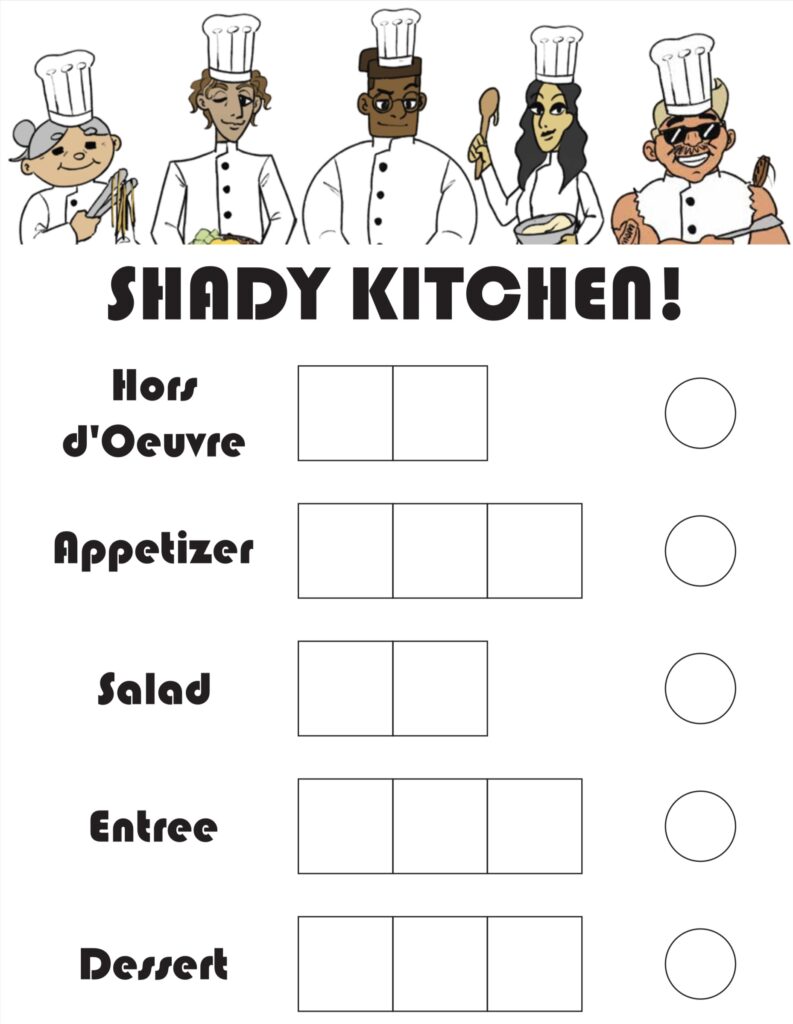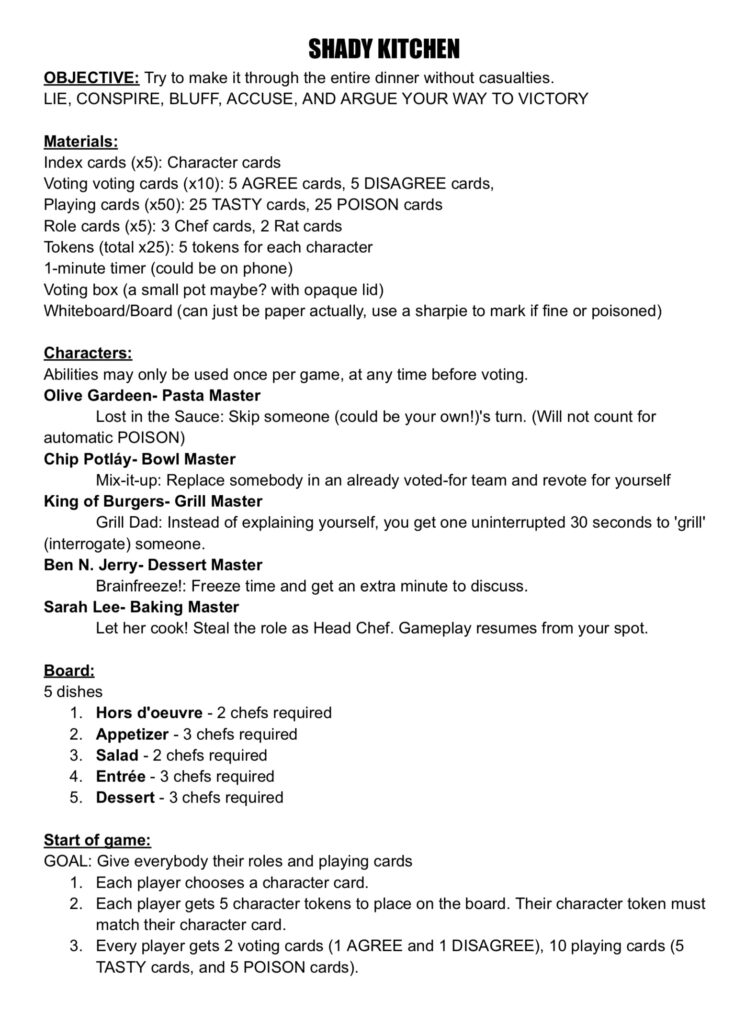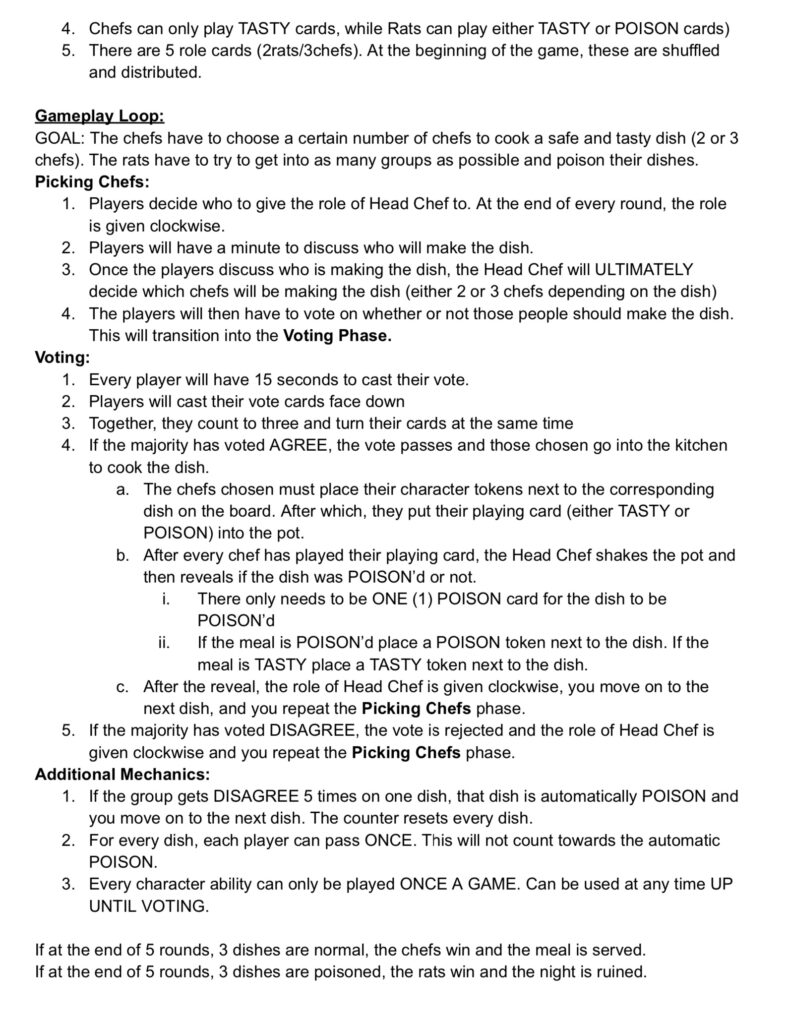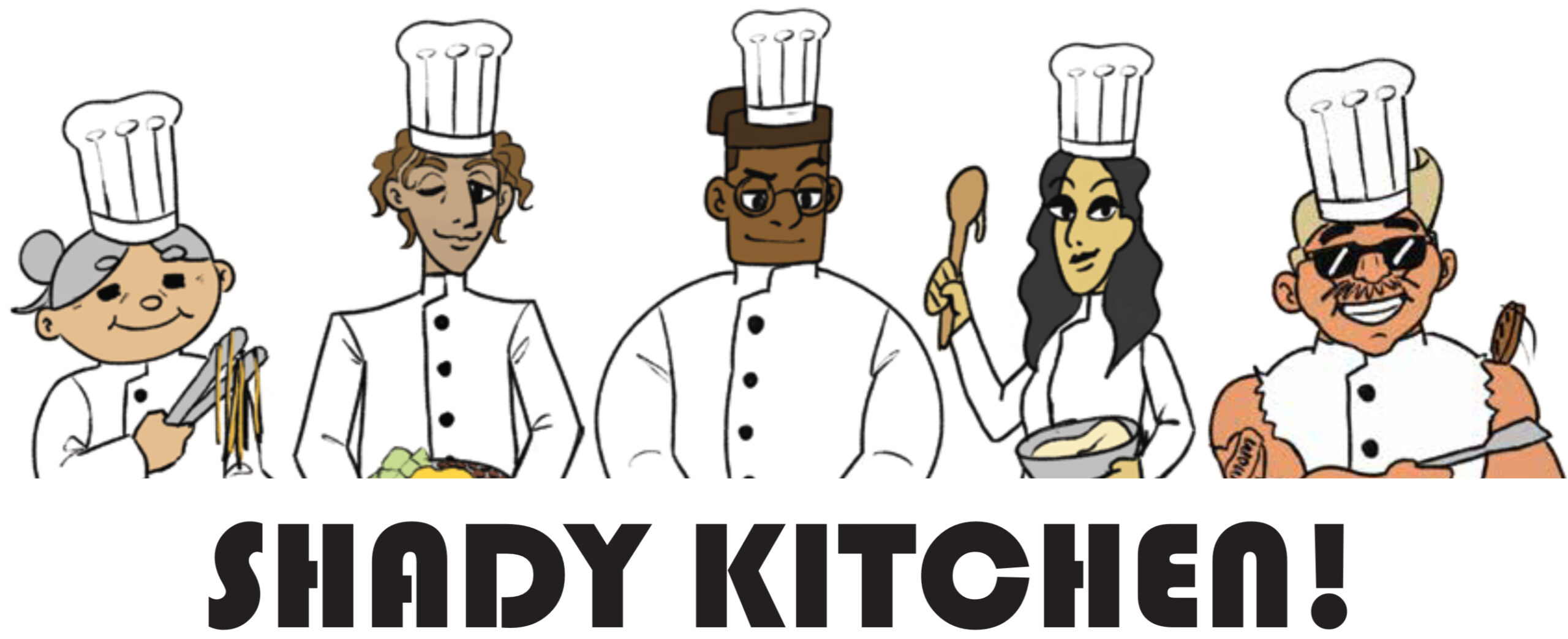A card game by Jamie Shiao and Dylan Martin
We started by thinking about what kinds of games are fun in an analog setting. We both determined that social deduction games are by far the most fun, especially if we can facilitate chaos and in-fighting throughout the game. After looking at some really popular social deduction games like Among Us, Werewolf, Town of Salem, and Mindnight, we ultimately decided to pull inspiration from Mindnight to create our game.

In Mindnight, you assume the role of either an agent or a hacker, where the goal of an agent is to secure 3 out of 5 nodes, and the goal of a hacker is to hack 3 out of 5 nodes. This sort of setup is similar to Among Us, but the key difference is that players are not eliminated, but instead the players must figure out who the hackers are to secure 3 nodes safely. However, none of the hackers or agents know who their teammates are. We felt that this game worked best with 5 people, so we decided to pull from this concept and create a 5-player card game.
To make our game different from Mindnight, we created a different theme for our game, which led to the addition of new Game Mechanics. We picked out of a Restaurant theme, a Classroom theme, and a Fantasy Village theme. We ultimately picked the Restaurant theme because the idea of Chefs vs Rats, inspired by Ratatouille, was a funny concept that would inspire role-playing or at least familiarity with the movie. This led to us adding a new mechanic, character abilities, where each player received a character card of a specific chef, a Master in their specific craft, that described an ability a player could use once a game. Each ability was tuned so that it would be somewhat fair, but to be honest, we can’t necessarily tell the power scaling until we playtest the game.
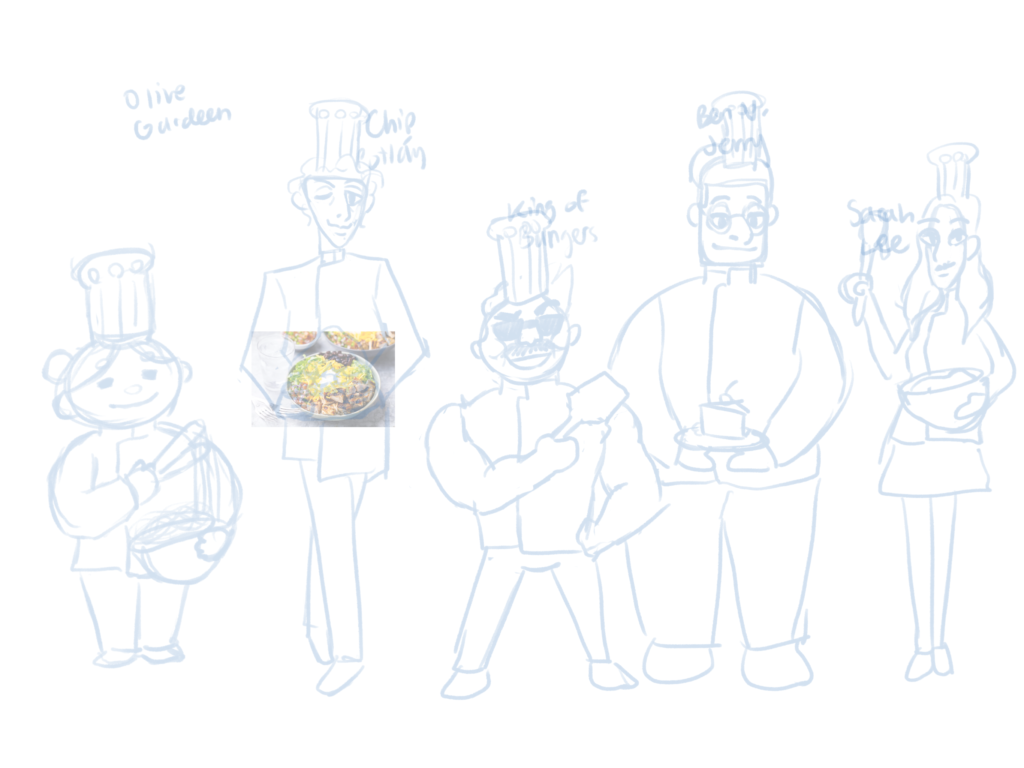
We also played One Night Ultimate Werewolf and played around with the idea of using a dungeon master (DM) to facilitate the rounds. That way, the rules can be explained throughout the game. However, we instead used the concept of Head Chef, a rotating role where a player will facilitate a specific round before passing it to the next player.
Finally, it was time to start writing out the rules and creating the materials. We used playing cards, index cards, green tokens, and plastic bags to separate the material types into their packages. We printed out stickers with the necessary graphics and put them on the game materials, and we printed our rule sheet on a piece of cardstock. The biggest challenge with this part of the process was finding the line between perfectionism and creating a crude prototype for testing. We felt that having at least a few assets designed would make the game feel better to play, so players don’t feel hindered by the materials being unclear (and also cuz we have some funny ass graphics, you guys). At the same time, it was important to ensure we weren’t getting delayed but making the art beautiful instead of functional. The second biggest challenge was cutting all the stickers out and pasting them onto the actual materials.
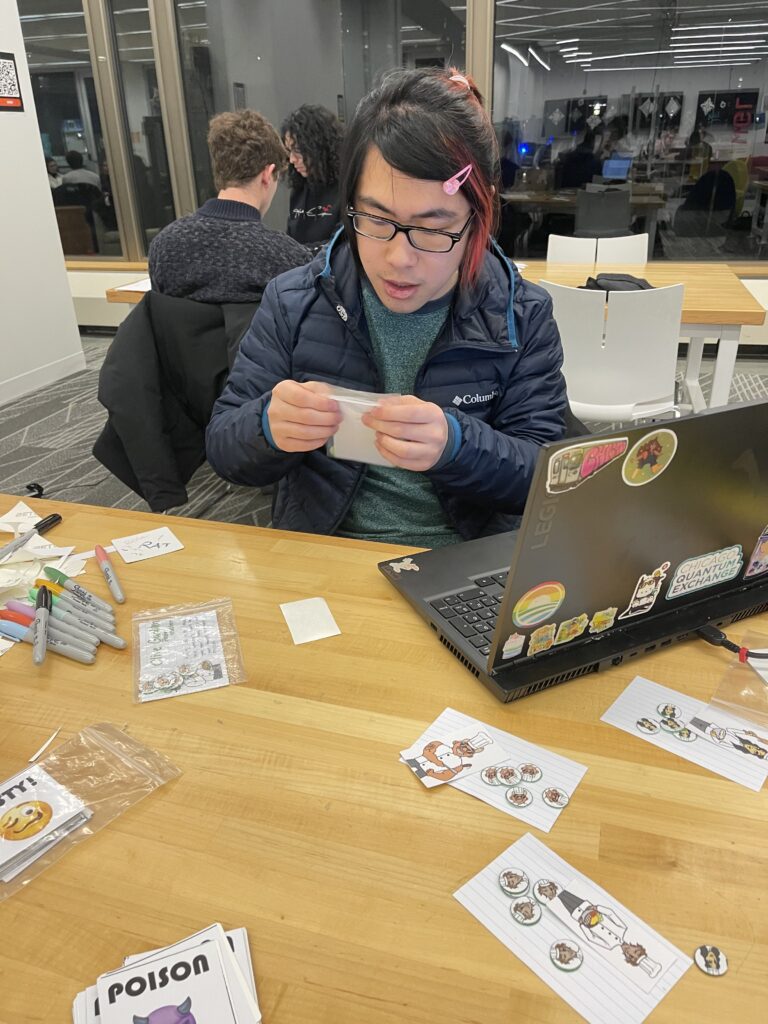
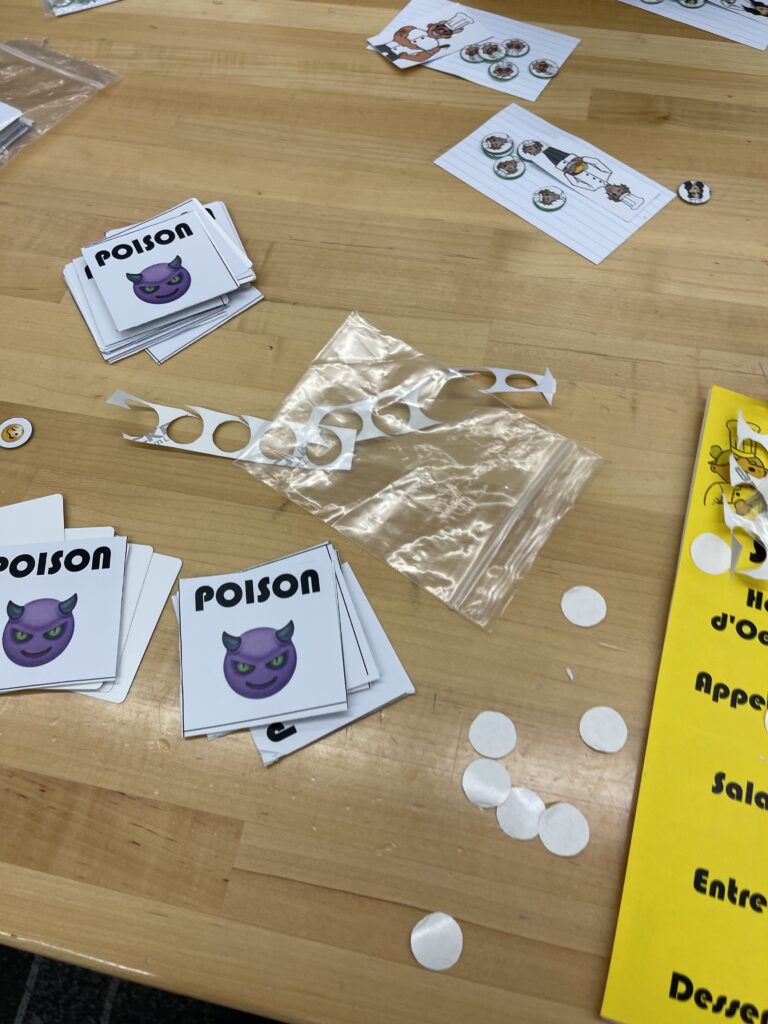
Finally, we play-tested the game with a couple of friends (Alec Bargher, Erin Matthews, and Shayne Saito). Together as 5 players, we played one game of Shady Kitchen and found that the game was incredibly fun and that the players all had a good time. We didn’t receive much feedback other than the game functionally works, so we are excited to see what people think in our in-class playtest!
